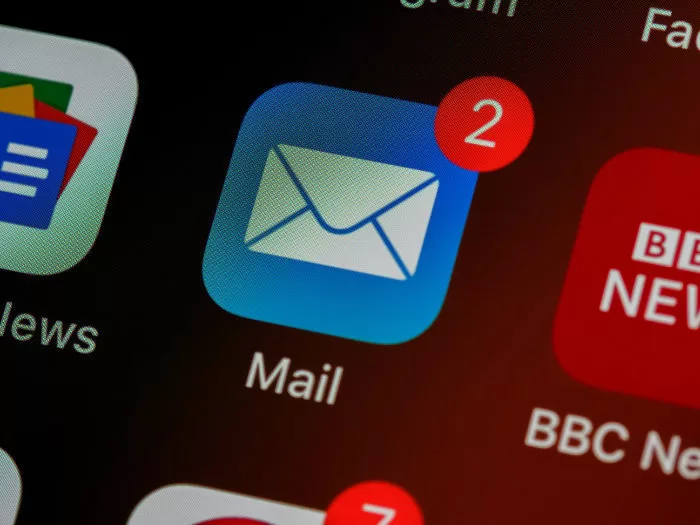Email Newsletter Marketing - What Is 'Content of Value' and Why Is It So Critical?
Updated on October 31, 2024 by Tim Donahue
Good email newsletters provide content of value to readers – they aren’t just ads for your business
Welcome to the ever-evolving world of email marketing! Here, we’ll dive into the importance of providing “email newsletter content of value” to your audience and why it’s a game-changer in your marketing strategy. Let’s learn more and how you can apply it to your newsletters right away:
Understanding the concept of ’email newsletter content of value’

A summary of ’email newsletter content of value’
‘Email newsletter content of value’ refers to meaningful and beneficial information you share with your subscribers. It’s not just about promoting your products or services, but more about providing solutions, insights, and resources that resonate with your audience’s needs and interests. This strategy is crucial in building trust, fostering engagement, and eventually driving conversions.
Step-by-step guide to creating valuable content
- Know your audience: Understanding your audience is the first step towards creating content of value. Dig into your analytics, conduct surveys, and perform market research to learn about their interests, challenges, and needs. This information will guide your content creation process.
- Provide solutions, not just products: Rather than just pushing your products or services, focus on how they can solve problems or improve your subscribers’ lives. For instance, if you’re a fitness brand, your email newsletters could include workout plans, nutrition tips, or motivational stories that align with your audience’s fitness goals.
- Stay updated and relevant: Keeping up with industry trends and news can provide fresh, valuable content for your audience. This not only shows that you’re a knowledgeable source but also keeps your content relevant and timely.
- Engage with storytelling: Stories are powerful tools for engagement. Sharing success stories, behind-the-scenes insights, or your brand’s journey can create a deeper connection with your audience, adding more value to your email newsletter content.
Examples and ideas for your newsletter – content of value ideas:
- Upcoming industry events or webinars
- Useful tips and tricks related to your products or services
- Time-saving tips pertaining to your users
- Insights into recent or upcoming industry changes
- Breaking industry news and updates
- Pre-announcements of upcoming offers or news of interest
- Exclusive discounts, deals, and promo codes
- Educational articles or short essays on relevant topics
- Case studies showcasing your product or service
- Interviews with industry experts
- Product or service updates and new feature announcements
- Behind-the-scenes looks at your company or team
- User-generated content, such as customer testimonials or reviews
- Surveys or polls to engage your audience
- Interactive content, like quizzes or contests
- Invitations to join your social media communities
- Links to relevant blogs or articles (both internal and external)
- Acknowledgement of holidays or seasonal events
- Personalized recommendations based on user behavior
- Recaps of recent company blogs or posts
- Information about corporate social responsibility initiatives
- Free resources, like eBooks, white papers, or guides
- Invitations to participate in beta testing or provide feedback on new features
- FAQs or how-to guides for your product or service
- Charitable campaigns or community service your company is involved in
Why is the ’email newsletter content of value’ so critical?
Importance of valuable content in email newsletters
Providing ’email newsletter content of value’ is crucial for several reasons. It fosters trust, enhances customer loyalty, boosts engagement, and eventually contributes to higher conversion rates. In a digital world cluttered with promotional content, offering something meaningful and beneficial can set your brand apart.
The difference between valuable content and advertising
It’s essential to distinguish between creating content of value and straightforward advertising. Let’s look at two examples to illustrate this difference:
- Advertising: “Our new winter collection is out! Get 30% off on all items.”
- Value content: “Winter is here, and so are skin woes. Here are some skincare tips to keep your skin glowing. Also, check out our winter collection designed to nourish your skin.”
The second example does promote a product but in a way that offers advice and shows concern for the reader’s needs. It isn’t just about selling; it’s about adding value.
How to integrate valuable content into your email newsletters
Integrating ’email newsletter content of value’ in your email marketing strategy is a worthwhile effort. It involves crafting content that is helpful, engaging, and relevant to your audience’s needs. This not only boosts your email engagement rates but also bolsters your brand’s credibility.
Actionable steps to implement valuable content
- Start with a content calendar: A content calendar helps you plan and organize your email newsletter content in advance. Make sure it aligns with your audience’s interests and your brand’s objectives.
- Include educational content: Share blogs, how-to guides, tutorials, or infographics that educate your audience about your niche or your products. For instance, a beginner’s guide to online marketing would be a great resource for an audience interested in enhancing their digital presence.
- Offer exclusive content: Exclusive content such as sneak peeks, early access to new products, or subscriber-only discounts can make your audience feel special and valued.
- Seek feedback: Regularly ask your subscribers for feedback on your content. This not only helps you improve your content but also shows your audience that you value their opinion.
- Measure and adjust: Use metrics like open rates, click-through rates, and conversion rates to measure the success of your email newsletter content. Use these insights to adjust your strategy as needed.
Conclusion
Creating ’email newsletter content of value’ is more than just a marketing strategy – it’s a commitment to understanding and catering to your audience’s needs. By following these steps, you can create an email marketing strategy that resonates with your audience, builds trust, and drives conversions. Remember, the key lies not in selling, but in serving.
Feeling pumped to revamp your email marketing? Check out our other resources on Email Marketing for Beginners, SEO for Beginners, and how to Increase Website Traffic to give your digital marketing a boost!
